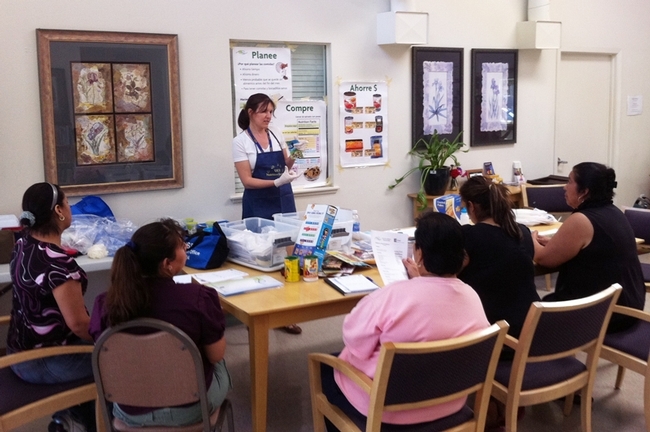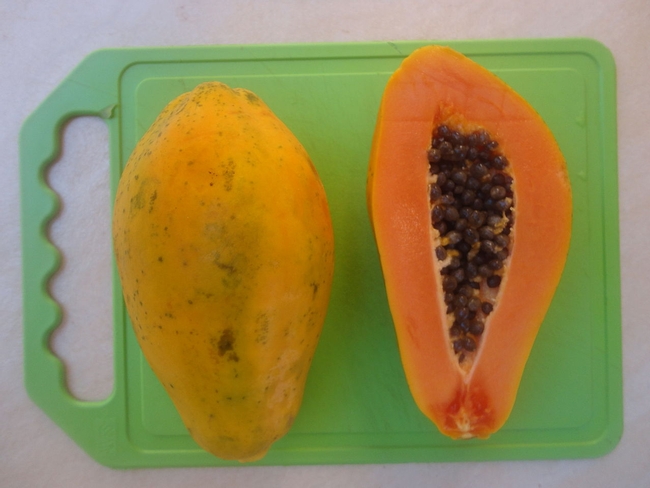
Most kitchens were stocked with ample fruit and vegetables, legumes and whole wheat bread. Researchers inventoried the food in the five homes before and after the training, and were able to document significant improvements attributable to UC ANR's signature nutrition education curriculum, Plan, Shop, Save & Cook.
“The classes helped families make small changes that made a difference – leading to modest, but very important savings at the end of the month. If your cupboards are bare, an extra $5 in your wallet is significant,” said Susan Algert, the nutrition, family and consumer sciences advisor for UC ANR in Santa Clara County. “The families typically turned around and spent those savings on something healthy, which is what we asked them to do.”
A report on the pilot study was published this month in the Journal of Hunger & Environmental Nutrition. The families involved were all eligible for the federal government's Supplemental Nutrition Assistance Program, which in California is called CalFresh. The educational component, administered by UC ANR Cooperative Extension, is called UC CalFresh.
“Digging through pantries is labor intensive, but revealing,” said Algert, the study's lead author. “This gives us a good idea what changes people make at home after they participate in our training.”
Typically the effectiveness of nutrition education programs are judged by asking participants to answer surveys before and after they attend classes, but errors due to attention, comprehension, memory and recording can lead to inaccurate conclusions.
“Direct observation is the gold standard and is conducted by trained researchers who travel to a subject's home and record all foods present in the home – in the refrigerator, freezer, pantry and elsewhere,” Algert said.
In the pilot evaluation, all the participants were Mexican or Mexican-American women 27 to 50 years old. A Spanish-speaking UC CalFresh educator presented three two-hour classes designed to help families stretch food dollars and increase consumption of fruits, vegetables and whole grains. The class sessions included information on the USDA's MyPlate nutrition guide, portion sizes, comparison shopping, label reading, menu planning, healthful fats, limiting sugars, cooking, and saving leftovers.
When the before-and-after food inventories were tabulated, the researchers were able to draw conclusions about the training.

“Having worked with Latinos for many years, this made sense to me,” Algert said. “They wanted fruit that was part of the family culture from Mexico.”
Four of the five families switched to whole wheat bread.
“Whole wheat bread has come down in price to $2.50 or $3 a loaf, so that is a behavior that families could change very readily,” Algert said. “One family didn't change to whole wheat because the mother said the family preferred the taste of white bread.”
Four of the five families were able to shop less often using skills they learning in the UC CalFresh training, including planning menus, making healthier recipes from scratch and making shopping lists.
One participant said, “I used to spend $100 to $150 a week on food. Now I spend the same amount but every two weeks. I'm saving a lot.”
Another participant said sticking to a shopping list helps the family stay within a budget. “Now I avoid taking my kids to 7/11 or convenience stores because the food is not healthy and it just contributes to spending more money,” the participant said. “This way, I am saving the money I can spend on healthier food.”
An initiative to maintain and enhance healthy families and communities is part of the UC Division of Agriculture and Natural Resources Strategic Vision 2025.
Author: Jeannette Warnert